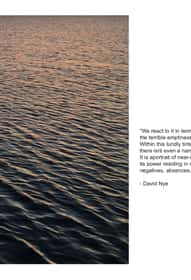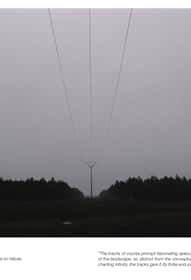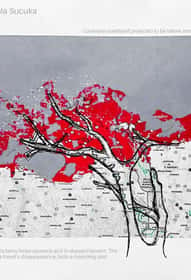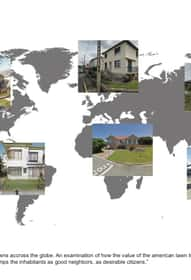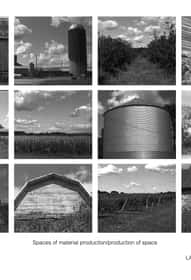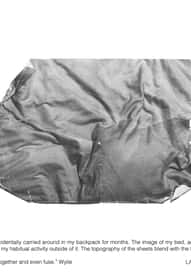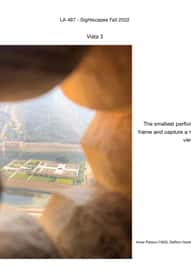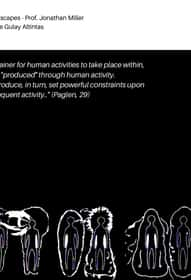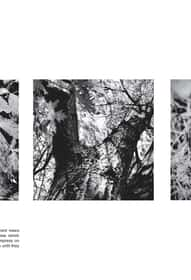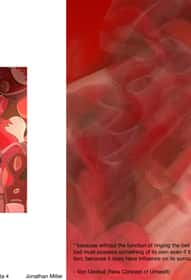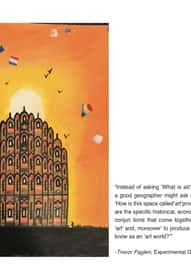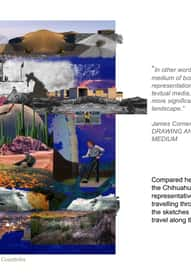MLA+U Fall
- Cameron Carter |
- Jingcheng Chen |
- Jingwei Guan |
- Jorge Mayorga |
- Mahmudur Rahman |
- Maurice Gaston |
- Melika Yousefi |
- Yeliz Otkiran |
- Zhicong Fang
ARCH 541 LANDSCAPE ARCHITECTURE STUDIO I : PROCESSES STUDIO
This studio is the first of six studios at the Master of Landscape Architecture + Urbanism program, creating a framework to embrace core tools of the discipline of landscape architecture. This studio explores dynamic conditions defining spaces investigated through research, site visits, abstraction, and critical intervention. This course maintains a primary goal for participants to develop an understanding of the fundamental relationships of dynamic processes with an emphasis on representing time, movement, space, light, rhythms, shifting boundaries and enclosures, and physical materials of landscape.
The final exercise for this studio course explored a new public landscape within the Irving Park Canoe Landing in Schiller Park, IL along the Des Plaines River. Reacting to conditions of seasonal flooding and weekly occupation by recreational kayakers witnessed on the site, the studio group expanded on site observation exercises performed throughout the semester to introduce new programs within this urban public space.
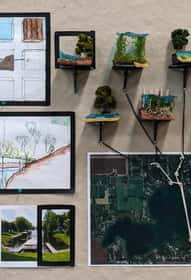
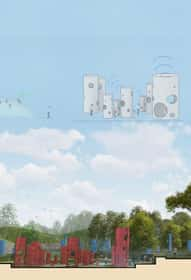
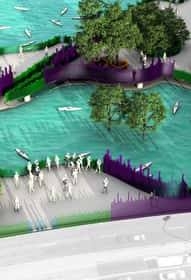
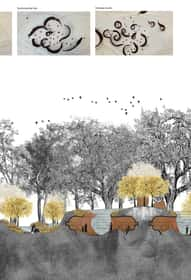
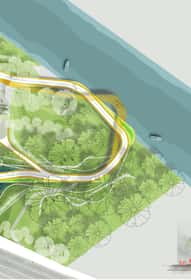
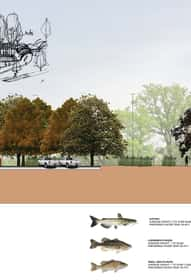
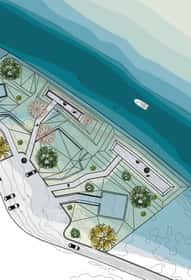
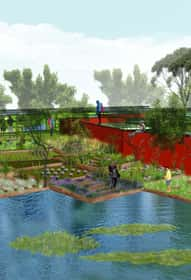
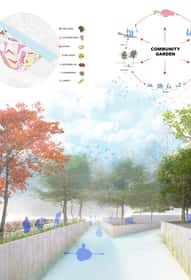
- Vrittany Salais |
- Erik Schiller |
- Hans Friedl |
- Krista Dawson |
- Nick Myers
LA 543 LANDSCAPE ARCHITECTURE STUDIO III : Comprehensive Landscape Architecture
This studio performed an investigative study of the site design for the future DuSable Park, located on Lake Shore Drive between the Ogden Slip and the mouth of the Chicago River. In this investigation, research was conducted into the physical and cultural history of the city of Chicago as it relates to the first non-native settler, Jean Baptiste Pointe DuSable. Informed by site history, cultural context, and existing site conditions, the students reimagined a design that would encompass these elements and showcase the history and impact of DuSable’s arrival.
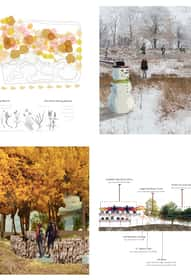
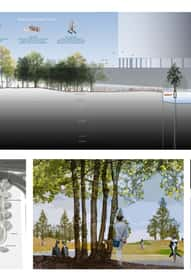
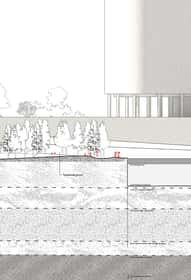
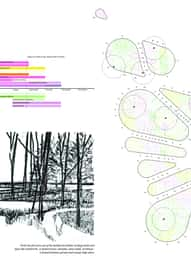
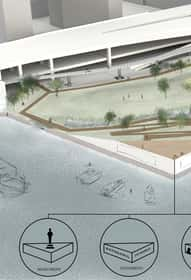
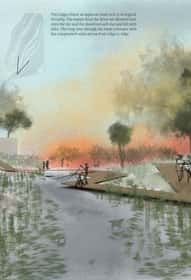
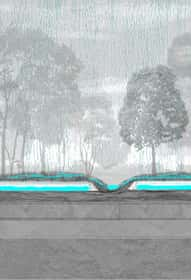
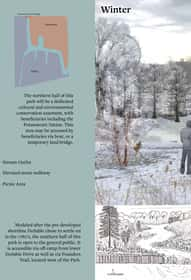
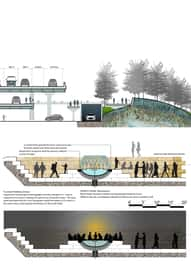
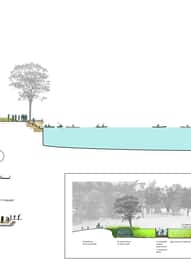
- Amanda Soto |
- Jessica Flatley
LA 545 : LA Studio V
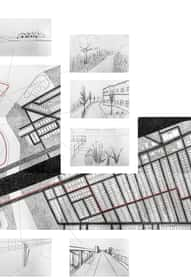
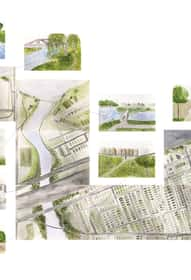
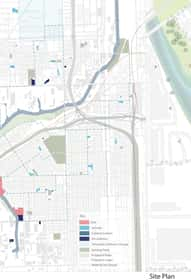
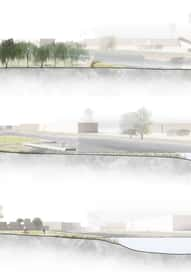
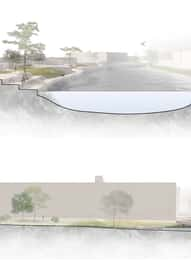
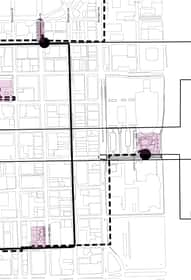
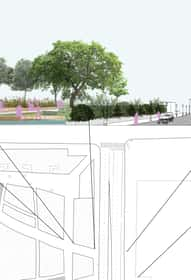
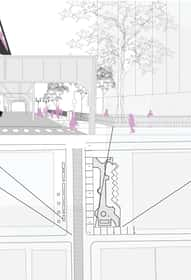
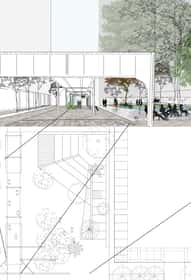
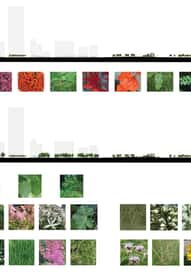
- Amanda Soto |
- Jessica Flatley
LA 504 HISTORY, THEORY, AND CRITICISM III : LANDSCAPE ARCHITECTURE RESEARCH SEMINAR
Using Chicago’s Lincoln Avenue as a study site, a contemporary street built upon trail routes formed by indigenous peoples for generations prior to colonization, this course developed research methodologies for scholarly investigations in post-graduate academic environments and beyond. A body of knowledge on Chicagoland mobility networks was built through research in literature, mappings, and first-hand data collection. Participants crafted graphic and written investigations to communicate urban scenarios imagining changes in mobility technology over generations.










- Amanda Soto |
- Krista Dawson |
- Hans Friedl
LA 527 Design Media III : Advanced Modeling and Fabrication
Advanced Modeling and Fabrication: Video Representation of Landscape Architecture
Students created videos to represent a landscape of personal significance in the Chicagoland region while learning how to communicate about complex three-dimensional surfaces, objects and space through self-captured live-action video, sound, and editing.
- Yeliz Otkiran
LA 565 Ecology and Materials I : Plants and Planting
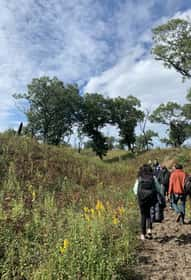
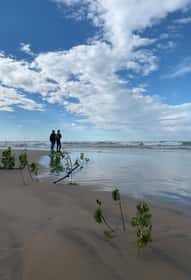
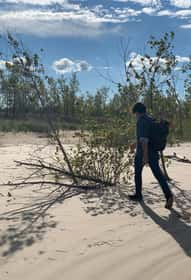
- Erik Schiller
ARCH 567 Ecology and Materials III : Horticulture
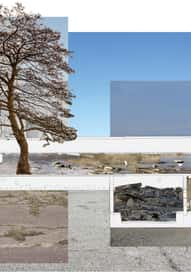
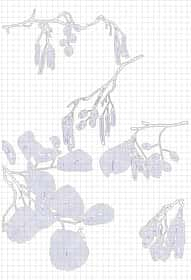
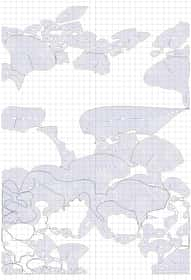
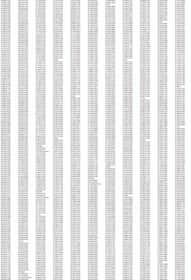
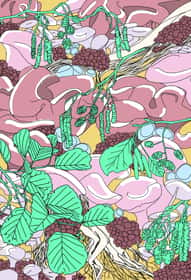
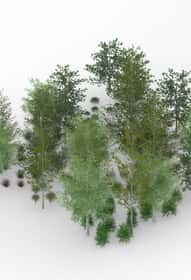
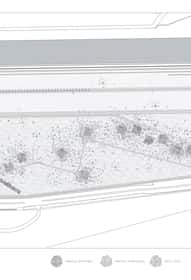
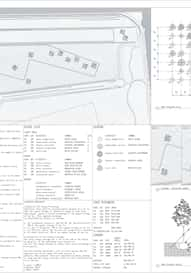
MLA+U Spring
- Cameron Carter |
- Jincheng Chen |
- Jorge Myorga |
- Juliana Cardozo Chamorro |
- Maurice Gaston |
- Md Mahmudur Rahman |
- Melika Yousefi |
- Mohammad Arabmazar |
- Zhicong Fang
LA 542 Landscape Architecture Studio II : Site and City
The twentieth-century city celebrated urban density and continuity of movement by constructing multi-level cities. In Chicago, the construction of two levels adjacent to the Chicago River defines a quintessential experience of the city and is an expression of infrastructural priorities: water conveyance, mass transit, and private transportation. Twenty-first-century projects along the Chicago River have worked to exploit the duplication of ground planes in order to enrich the experience of public space. This investigation continued explorations of these topographic landscapes in one of the largest enclosed urban courts in the city: Pioneer Court. At the elevation of Michigan Avenue, the site functions as a plaza, but beneath the site program is much different and utilitarian. Student projects sought to reimagine how “ground” is conceived on a site with two distinct levels and worked to connect these two through creating an opening in the site equal to 40% of its surface area and increasing biomass.
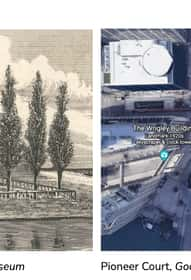
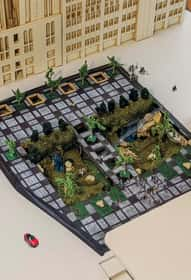
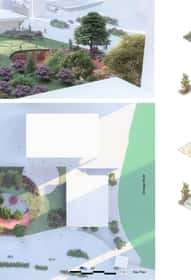
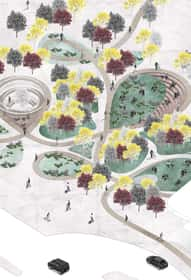
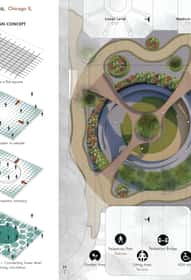
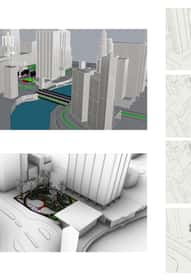
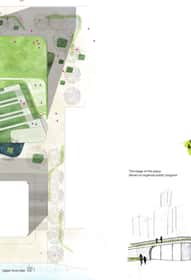
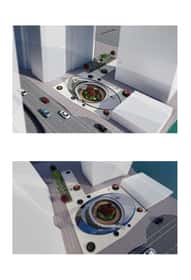
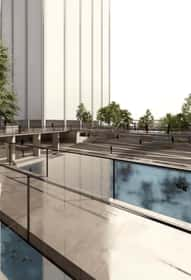
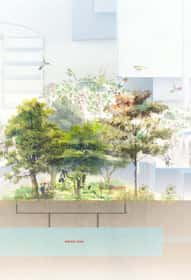
- Cardozo Juliana |
- Zhicong Fang |
- Jingcheng Chen |
- Melika Yousefi |
- Johann Friedl |
- Nick Myers |
- Krista Dawson |
- Mohammad Arabmazar |
- Jorge Mayorga |
- Cameron Carter |
- Maurice Gaston |
- Mahmudur Rahman
ARCH 544 Landscape Architecture Studio IV : Site, City, Region
This studio is the fourth of six studios at the Master of Landscape Architecture + Urbanism program, extending the core tools of the discipline of landscape architecture exercised in previous studio work to understand and reconsider patterns of urbanization. This studio explores dynamic conditions defining spaces investigated through research, site visits, abstraction, and critical intervention. This course maintains a primary goal for development of landscape architecture as a multi-scalar framework for designing dynamic urban processes and sites. Emphasis on research and design strategies that focus on the region as an analytical lens for site-specific design.
The studio group examined opportunities to increase accessibility, programming, and ecological performance throughout the Forest Preserve District of Cook County (FPDCC) system and adjacent urban communities. Mapping and research on the greater Des Plaines River watershed identified conditions and issues that can be impacted by interventions within the FPDCC system and adjacent municipalities. The final exercise engaged regional issues with a reconsideration of a 3-acre territory in Lyons, IL contacting the Des Plaines River, FPDCC property, residential neighborhoods, existing roadways, and retail commercial development. Current jurisdictional boundaries between private property and public infrastructure were reconsidered to calibrate a public realm that fortifies regional transit, park, and ecological networks.
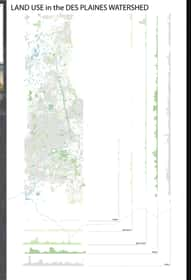
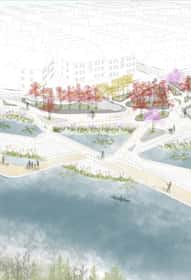
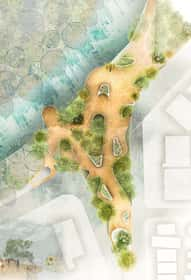
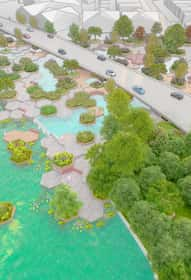
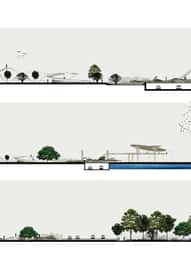
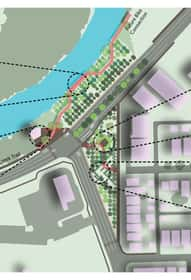
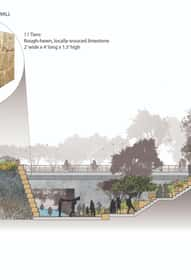
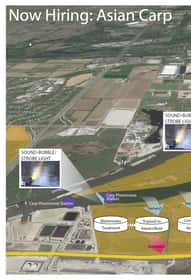
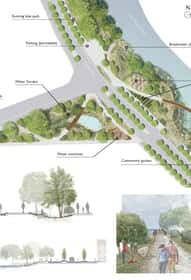
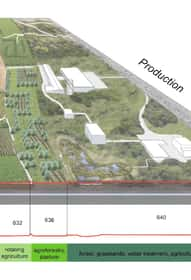
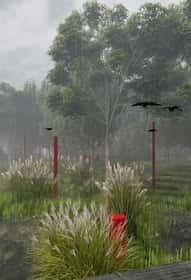
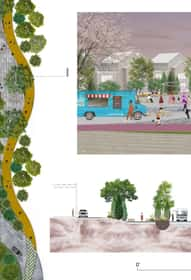
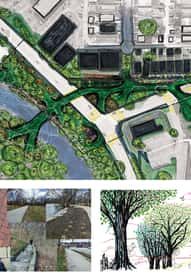
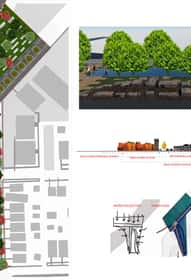
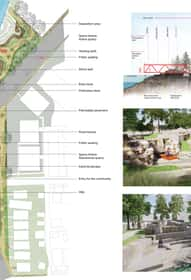
- Jordan Lickert |
- Yoojin |
- Park |
- Damla Sucuka |
- Jessie Flatley |
- Keith Wiley |
- Mae Smith |
- Maharshi Patel |
- Nese Gulay Altintas |
- Samah Rafati |
- Semra Defterali |
- Singh Arkansh |
- Vrittany Salais |
- Daniel Garczek
LA 497 : Sightscapes
The seminar begins with the premise that "landscape is a way of seeing the world." It undertakes a broad study of the landscape in art, as well as art in the landscape; with readings in art history, aesthetic theory, technology studies, etc. focused on a consideration of conventions, techniques and practices of landscape representation in the Western and non-Western traditions. Seminar participants investigate pertinent architects, artists, photographers, filmmakers and writers whose practices confront the multi-layered concept of landscape.
